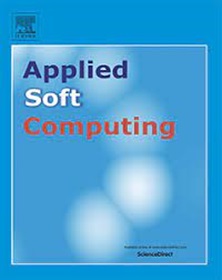Proximal recursive generalized hyper-gradient descent method
IF 7.2
1区 计算机科学
Q1 COMPUTER SCIENCE, ARTIFICIAL INTELLIGENCE
引用次数: 0
Abstract
This paper focuses on the non-convex, non-smooth composite optimization problem. It consists of a non-convex loss function and a non-smooth regularizer function that admits a proximal mapping. However, the method is still limited in handling objective functions that involve non-smooth regularizer. How to determine the step size for solving composite optimization problems can be a challenge. To address this gap, we propose a recursive gradient descent algorithm using generalized hyper-gradient descent, named ProxSarah-GHD, which utilizes variance reduction techniques and provides update rules for adaptive step sizes. To improve its generalization in proximal gradient descent, a generalized variant of hyper-gradient descent, named Generalized Hyper-gradient Descent (GHD), is proposed in this paper. We prove that ProxSarah-GHD attains a linear convergence rate. Moreover, we provide the oracle complexity of ProxSarah-GHD as and in the online setting and finite-sum setting, respectively. In addition, to avoid the trouble of manually adjusting the batch size, we develop a novel Exponentially Increasing Mini-batch scheme for ProxSarah-GHD, named ProxSarah-GHD-EIM. The theoretical analysis that shows ProxSarah-GHD-EIM achieves a linear convergence rate is also provided, and shows that its total complexity is and in the online setting and finite-sum setting, respectively. Numerical experiments on standard datasets verify the superiority of the ProxSarah-GHD over other methods. We further analyze the sensitivity of the ProxSarah-GHD-EIM to its hyperparameters, conducting experiments on standard datasets.
近端递归广义超梯度下降法
本文重点研究非凸、非平滑复合优化问题。它由一个非凸损失函数和一个允许近似映射的非光滑正则函数组成。然而,该方法在处理涉及非光滑正则的目标函数时仍有局限。如何确定求解复合优化问题的步长是一个难题。针对这一缺陷,我们提出了一种使用广义超梯度下降的递归梯度下降算法,命名为 ProxSarah-GHD,它利用了方差缩小技术,并提供了自适应步长的更新规则。为了提高其在近似梯度下降算法中的普适性,本文提出了一种广义超梯度下降算法的变体,命名为广义超梯度下降算法(GHD)。我们证明 ProxSarah-GHD 达到了线性收敛率。此外,我们还提供了 ProxSarah-GHD 的甲骨文复杂度,在在线设置和有限求和设置中分别为 Oϵ-3 和 Onϵ-2+n。此外,为了避免手动调整批量大小的麻烦,我们为 ProxSarah-GHD 开发了一种新颖的指数递增迷你批量方案,命名为 ProxSarah-GHD-EIM。理论分析表明,ProxSarah-GHD-EIM 实现了线性收敛率,并表明在在线设置和有限求和设置中,其总复杂度分别为 Oϵ-4+ϵ-2 和 On+ϵ-4+ϵ-2。在标准数据集上进行的数值实验验证了 ProxSarah-GHD 优于其他方法。通过在标准数据集上进行实验,我们进一步分析了 ProxSarah-GHD-EIM 对其超参数的敏感性。
本文章由计算机程序翻译,如有差异,请以英文原文为准。
求助全文
约1分钟内获得全文
求助全文
来源期刊

Applied Soft Computing
工程技术-计算机:跨学科应用
CiteScore
15.80
自引率
6.90%
发文量
874
审稿时长
10.9 months
期刊介绍:
Applied Soft Computing is an international journal promoting an integrated view of soft computing to solve real life problems.The focus is to publish the highest quality research in application and convergence of the areas of Fuzzy Logic, Neural Networks, Evolutionary Computing, Rough Sets and other similar techniques to address real world complexities.
Applied Soft Computing is a rolling publication: articles are published as soon as the editor-in-chief has accepted them. Therefore, the web site will continuously be updated with new articles and the publication time will be short.
 求助内容:
求助内容: 应助结果提醒方式:
应助结果提醒方式:


